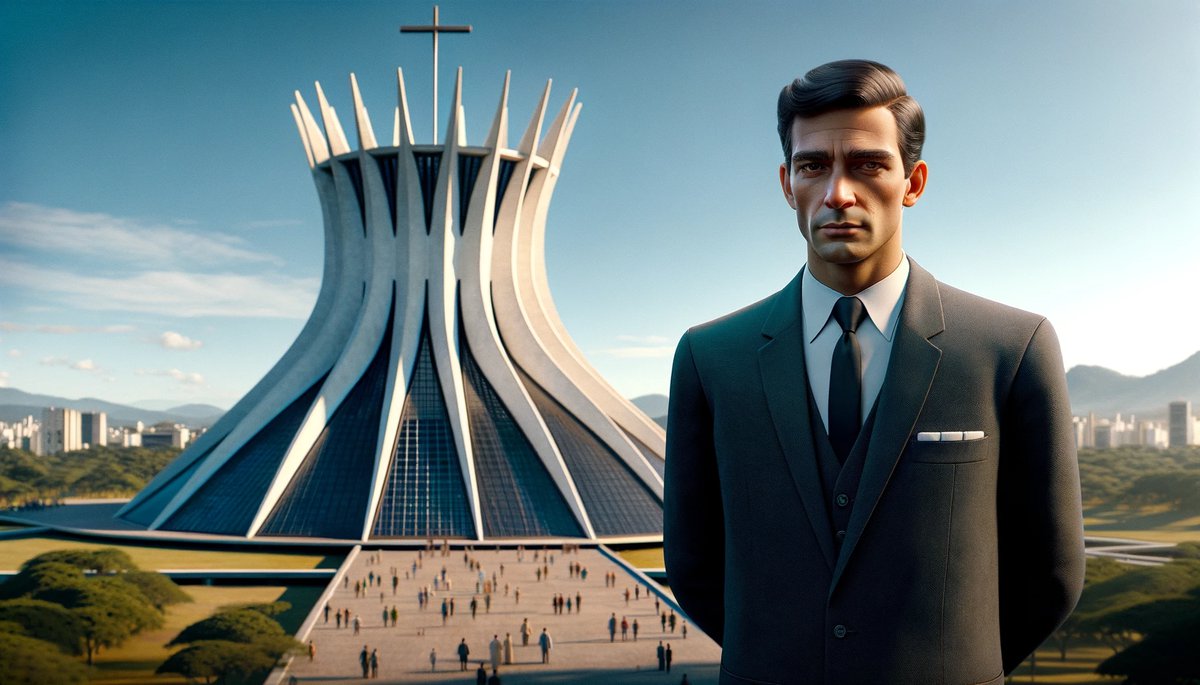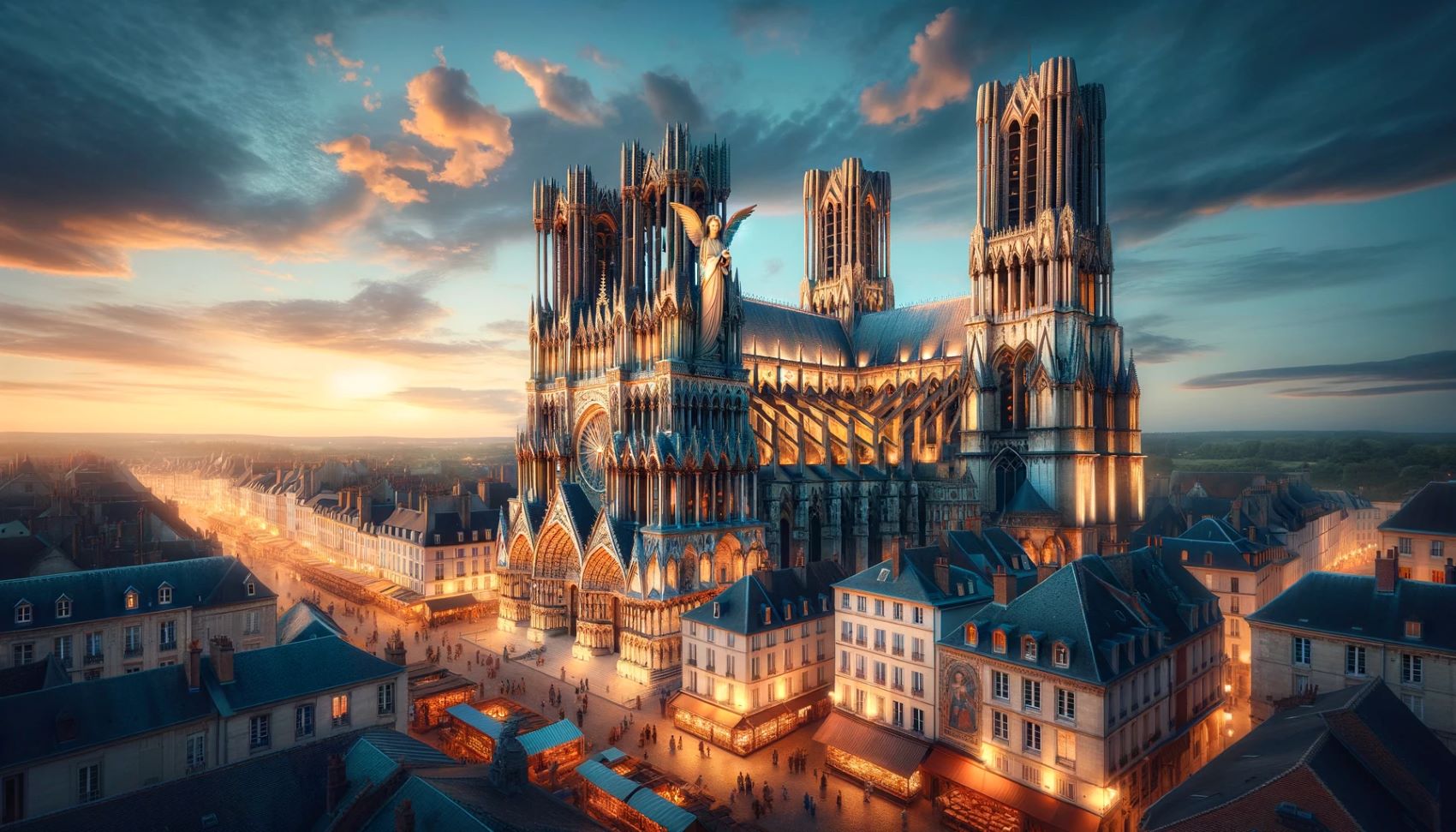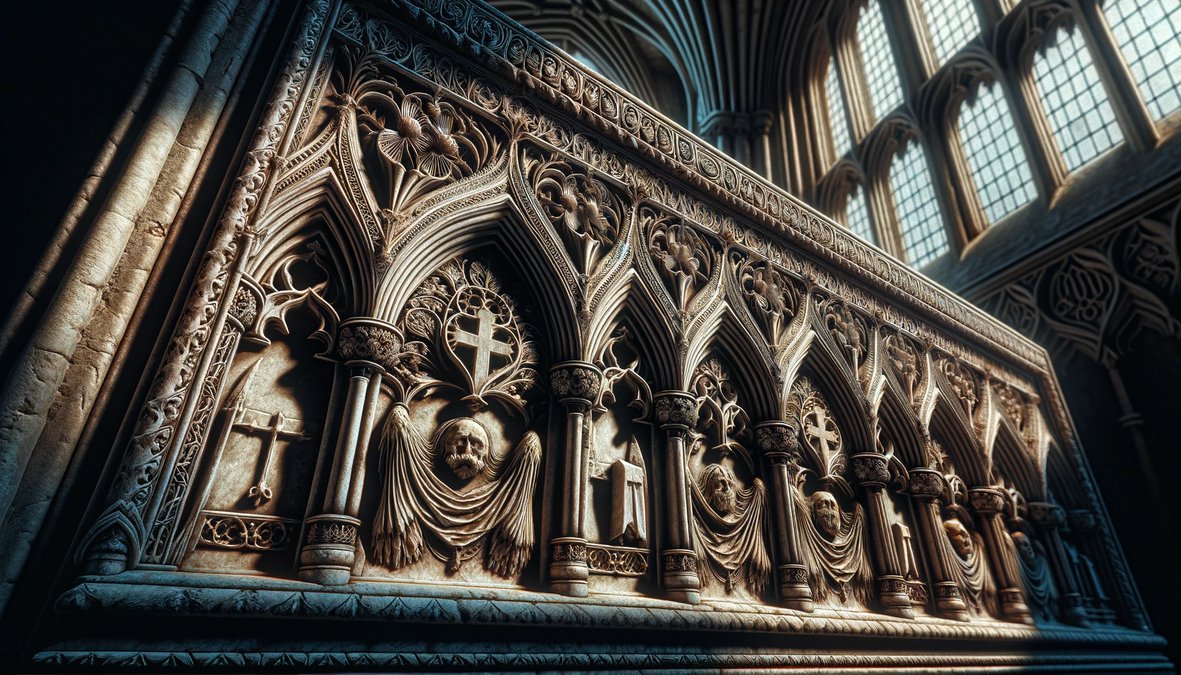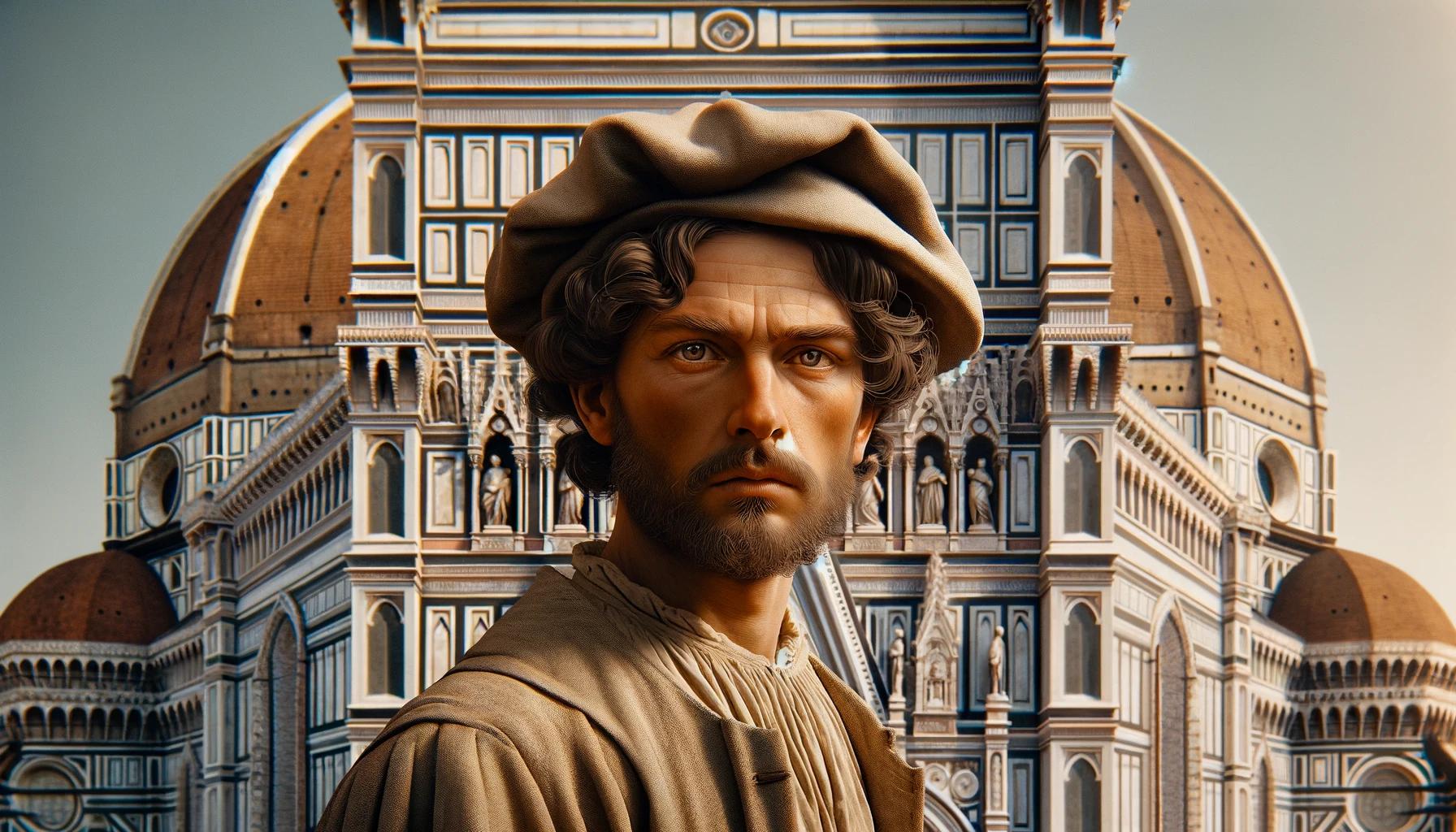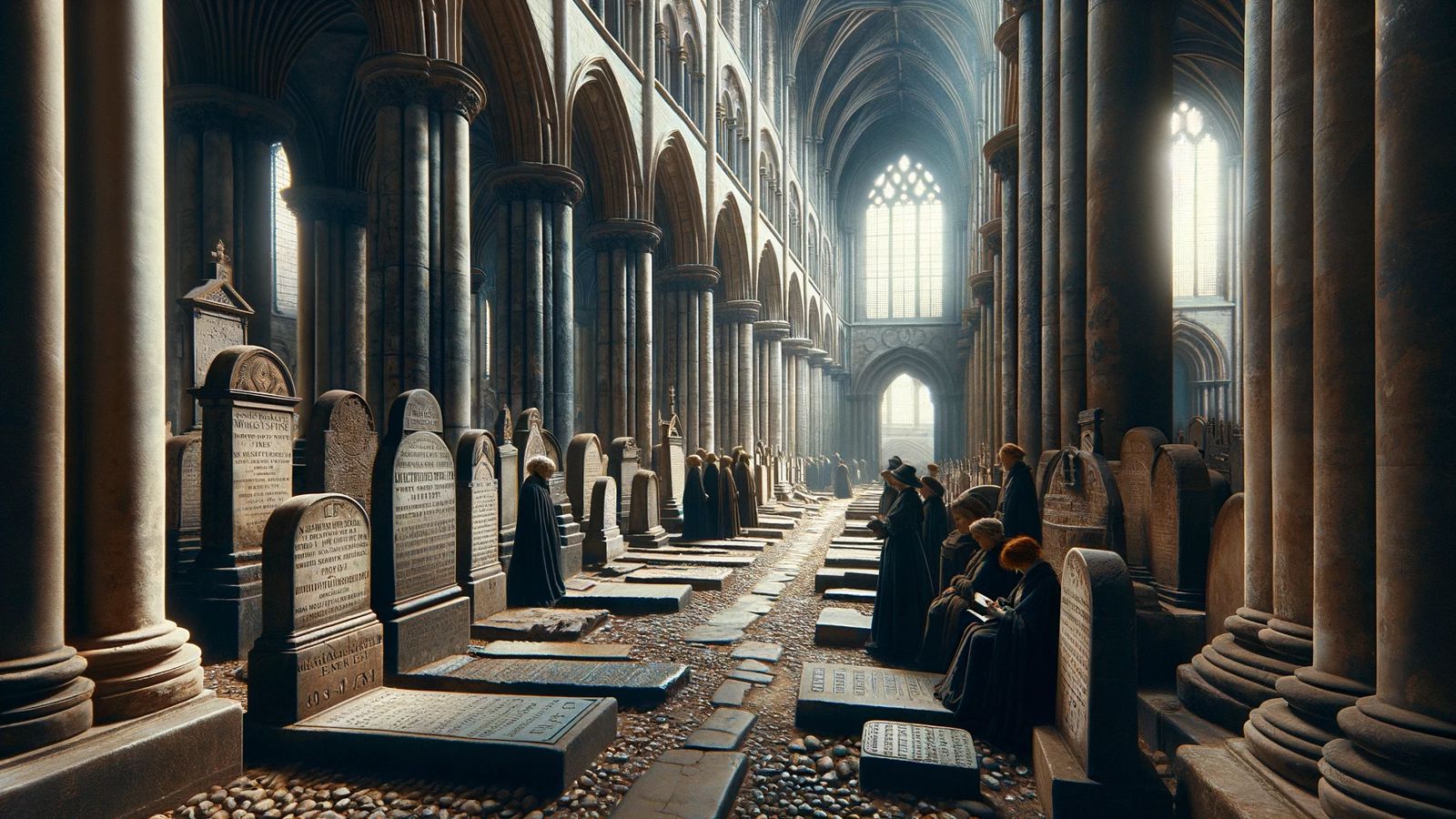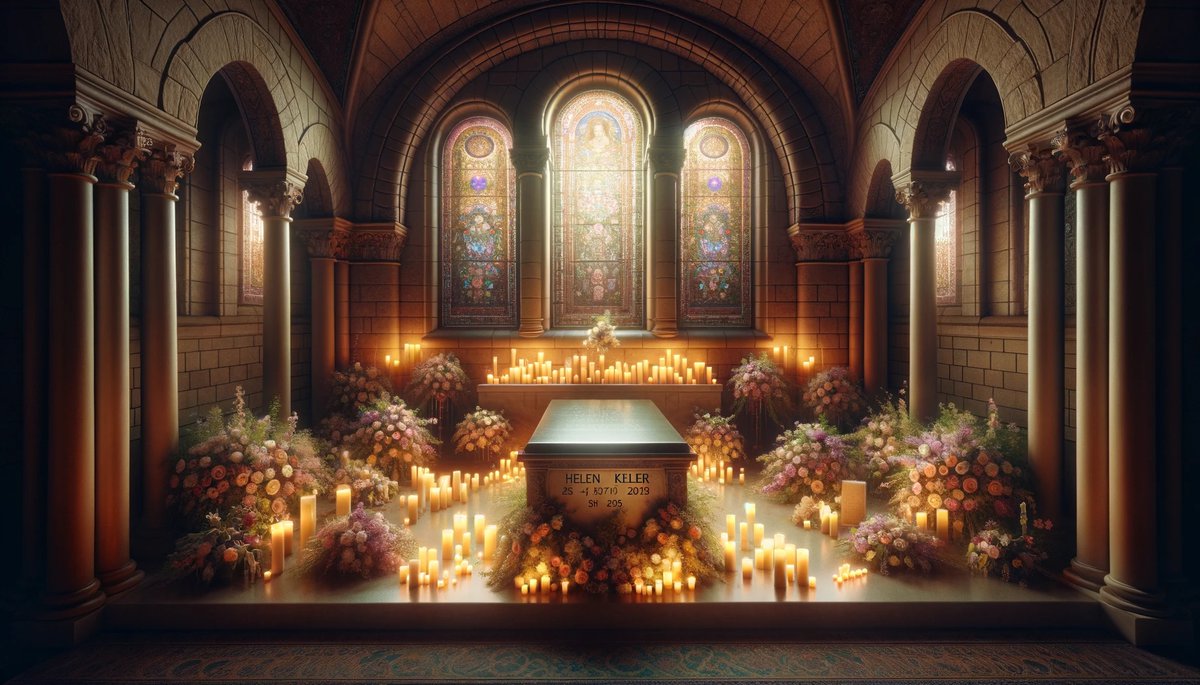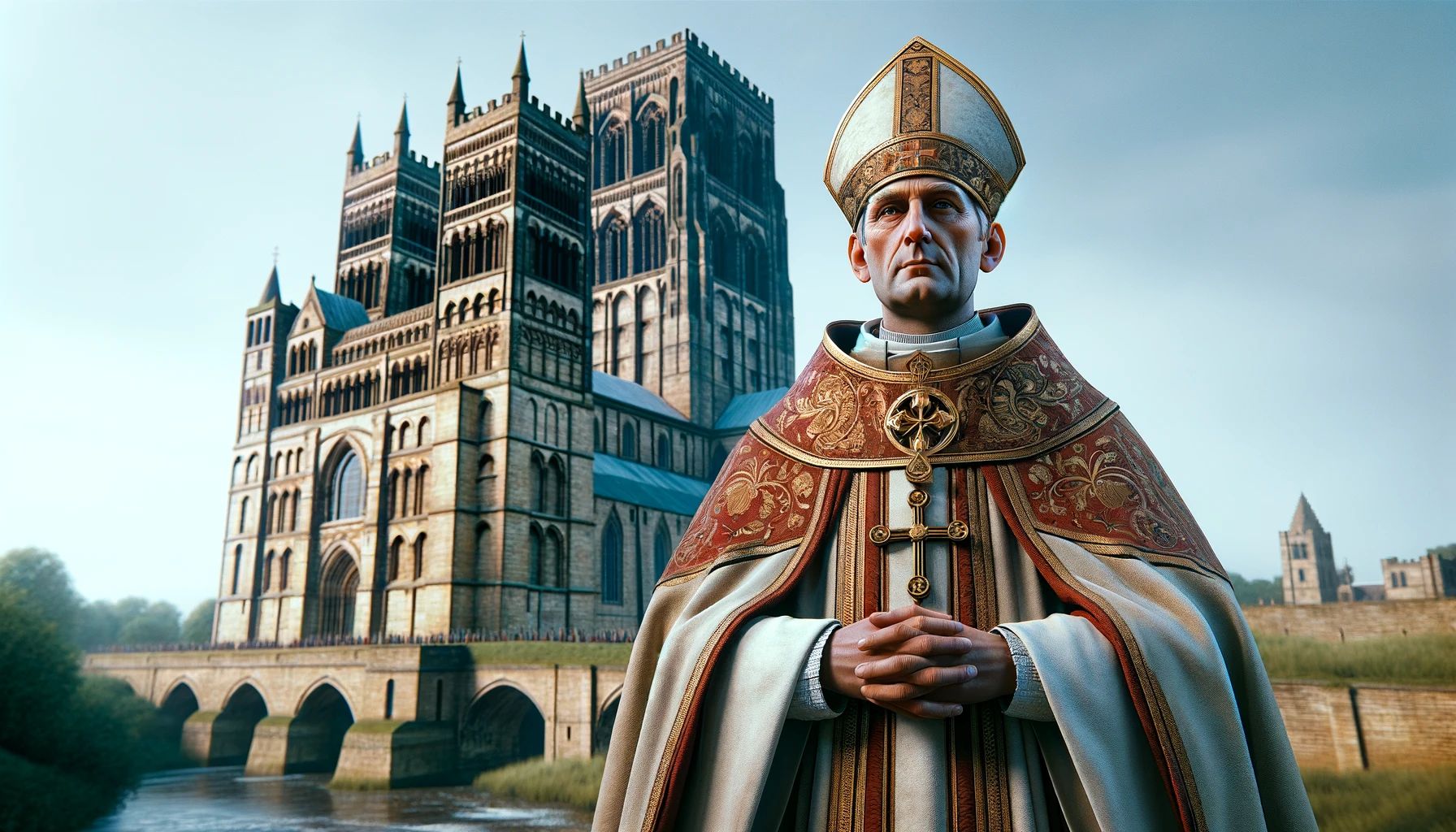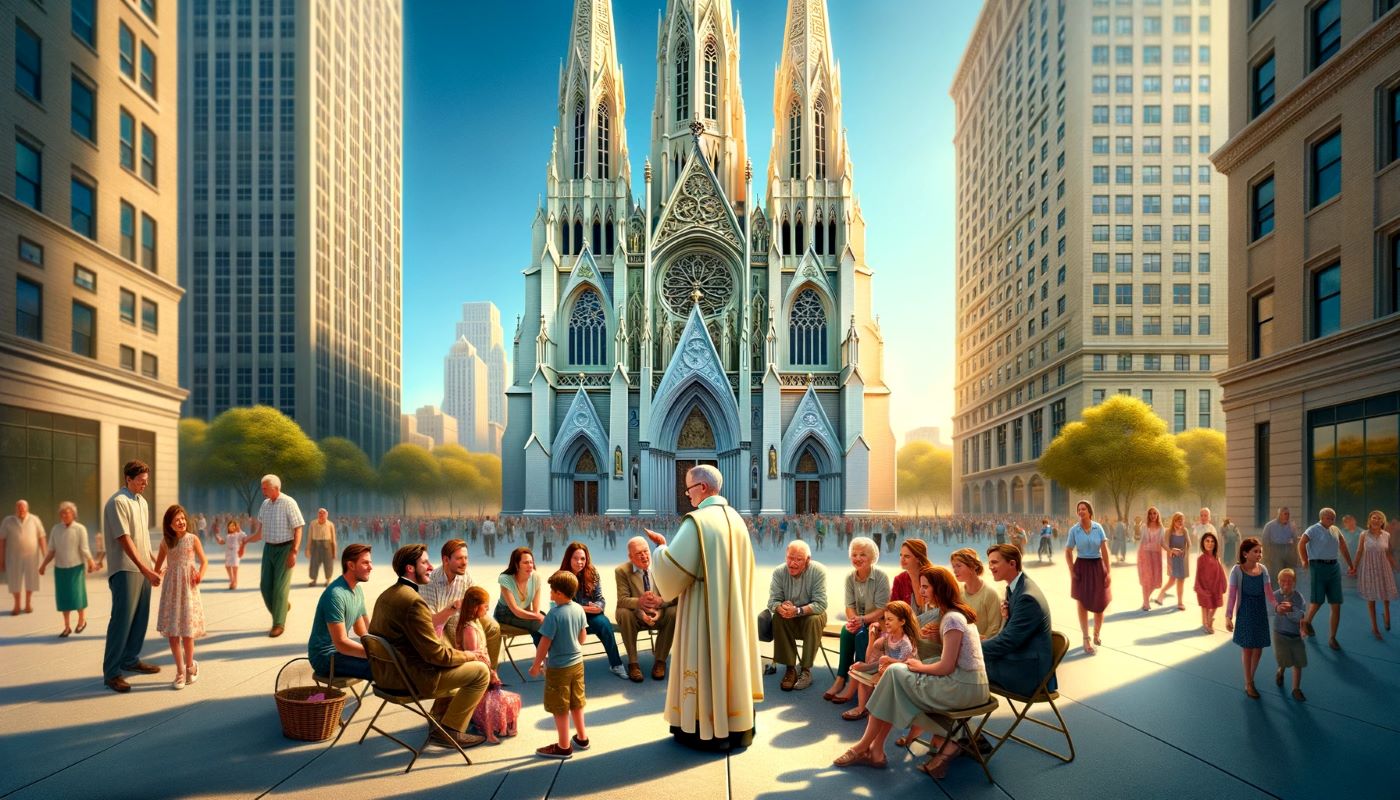Home>Arts and Culture>Who Designed Coventry Cathedral
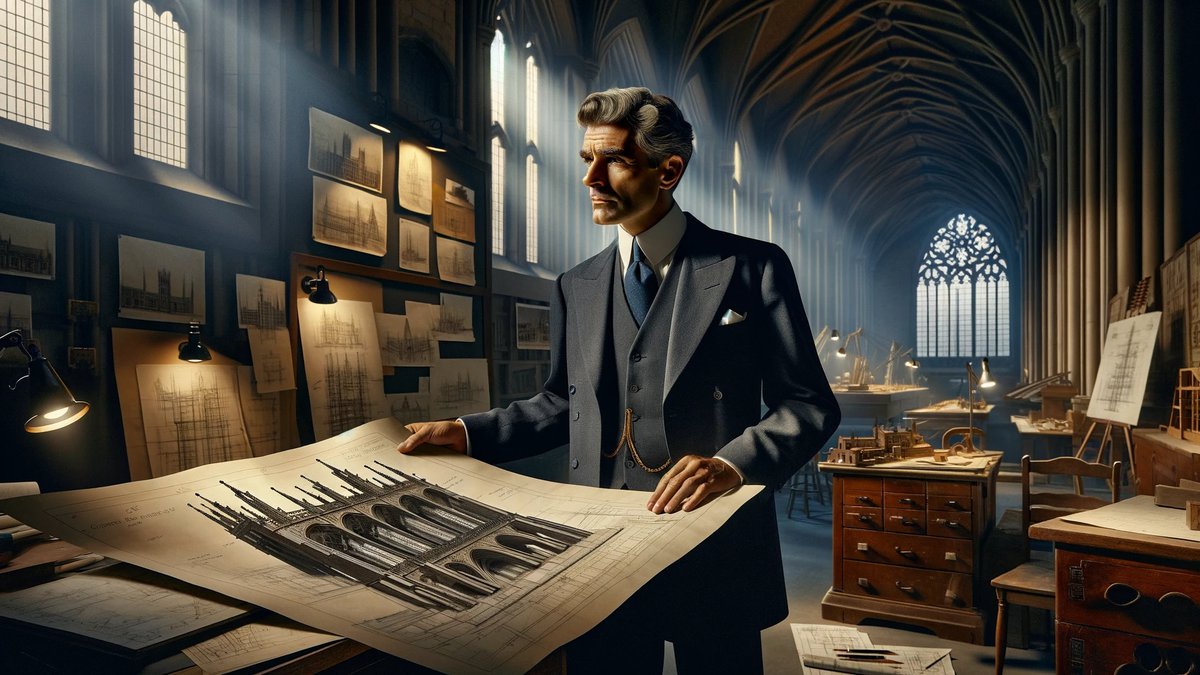

Arts and Culture
Who Designed Coventry Cathedral
Published: February 16, 2024
Ericka Andersen, an editor at Christian.net, expertly merges digital strategy with content creation, focusing on faith and societal issues. Her communication skills enhance the platform's engaging narratives, fostering meaningful dialogue on belief's impact on society.
Discover the renowned architect behind Coventry Cathedral and explore the intersection of arts and culture in this iconic landmark. Uncover the creative vision that shaped this historic masterpiece.
(Many of the links in this article redirect to a specific reviewed product. Your purchase of these products through affiliate links helps to generate commission for Christian.net, at no extra cost. Learn more)
Table of Contents
Introduction
Coventry Cathedral stands as a testament to the resilience and creativity of the human spirit. This iconic structure, located in the heart of the city of Coventry in the United Kingdom, is not merely a place of worship, but a symbol of hope, reconciliation, and architectural innovation. The story of Coventry Cathedral is one that intertwines history, art, and the enduring human quest for peace and understanding.
The tale of Coventry Cathedral is one of tragedy and triumph. The original medieval cathedral, built in the 14th century, was devastated during a devastating air raid in World War II. The destruction of this historic place of worship was a poignant moment in the city's history, but it also sparked a remarkable journey of rebirth and renewal.
In the aftermath of the destruction, the city of Coventry made a bold decision to rebuild the cathedral as a symbol of peace and reconciliation. This decision set in motion a remarkable architectural competition that would attract the attention of designers and visionaries from around the world. The competition itself became a testament to the global significance of the project and the collective desire to create something truly extraordinary.
The eventual design of the new cathedral would not only redefine the architectural landscape of Coventry but also serve as a powerful statement of resilience and unity. The cathedral's construction became a beacon of hope for the city and a symbol of healing in the aftermath of war.
As we delve into the history and legacy of Coventry Cathedral, we will uncover the remarkable journey of its reconstruction, the visionary minds behind its design, and the enduring impact it has had on the city and the world. Join us as we explore the captivating story of Coventry Cathedral, a testament to the enduring power of human creativity and the pursuit of peace.
Read more: Who Is Buried In Ripon Cathedral
The Architectural Competition
The aftermath of the devastating air raid in World War II left the city of Coventry with a profound sense of loss, not only in terms of lives and infrastructure but also in the destruction of its beloved medieval cathedral. However, amidst the rubble and remnants of the past, a remarkable opportunity emerged – the chance to rebuild and redefine the city's architectural landscape.
In 1950, an international architectural competition was announced, inviting designers and visionaries from around the world to submit their proposals for the new Coventry Cathedral. This competition was not merely a call for architectural blueprints; it was a global appeal for ideas that would encapsulate the spirit of reconciliation, hope, and resilience. The competition sought to harness the collective creativity and ingenuity of the global architectural community, recognizing the significance of this project beyond the boundaries of Coventry.
Architects, artists, and designers from various corners of the world eagerly embraced the challenge, recognizing the profound symbolism and opportunity presented by the reconstruction of Coventry Cathedral. The competition sparked a wave of creativity and innovation, as participants sought to capture the essence of the cathedral's significance within their designs.
The submissions ranged from traditional to avant-garde, reflecting a diverse array of architectural styles and philosophical approaches. Each proposal was a testament to the profound impact of the cathedral's history and the universal themes of peace and reconciliation. The competition itself became a platform for dialogue and exchange, transcending geographical and cultural boundaries to unite individuals in a shared vision for the future of Coventry.
The architectural competition not only showcased the talent and creativity of the participants but also served as a powerful catalyst for public engagement and discourse. The citizens of Coventry, still reeling from the scars of war, found solace and inspiration in the outpouring of ideas and designs. The competition became a symbol of collective resilience and determination, as the city rallied around the vision of a new cathedral that would stand as a beacon of hope and healing.
Ultimately, the architectural competition for Coventry Cathedral was not just about selecting a winning design; it was a celebration of human creativity, empathy, and the enduring spirit of renewal. The submissions, discussions, and deliberations embodied the universal yearning for peace and the unwavering belief in the power of architecture to convey profound messages of unity and reconciliation.
The winning design would not only shape the physical form of the new cathedral but also encapsulate the collective aspirations and dreams of a city seeking to rise from the ashes of destruction. It would become a symbol of resilience, a testament to the enduring power of human creativity, and a beacon of hope for generations to come.
The Winning Design
The culmination of the architectural competition for the design of Coventry Cathedral resulted in a moment of profound significance. Among the diverse array of submissions, one design emerged as a beacon of innovation, symbolism, and architectural brilliance. The winning proposal, submitted by Sir Basil Spence, stood out not only for its structural ingenuity but also for its profound embodiment of the cathedral's ethos of reconciliation and hope.
Sir Basil Spence's design captivated the imaginations of the jury and the public alike, offering a vision that transcended the traditional boundaries of architectural expression. His approach seamlessly integrated modernist principles with a deep reverence for the cathedral's historical and spiritual significance. The design was a harmonious fusion of tradition and innovation, a testament to Spence's ability to bridge the past and the future within a singular architectural masterpiece.
At the heart of Spence's winning design was the concept of unity and inclusivity. The cathedral's layout and spatial arrangement were meticulously crafted to evoke a sense of openness and interconnectedness, inviting individuals from all walks of life to gather, reflect, and find solace within its sacred precincts. The use of natural light, soaring arches, and carefully curated vistas created an atmosphere of serenity and contemplation, fostering an environment conducive to healing and reconciliation.
The iconic "Screen of Saints," a breathtaking work of art and craftsmanship, served as a focal point within the cathedral, symbolizing the continuity of faith and the resilience of the human spirit. The integration of contemporary artwork and design elements within the traditional architectural framework spoke to Spence's visionary approach, underscoring the cathedral's role as a living testament to the evolving tapestry of human experience.
Furthermore, the incorporation of modernist stained glass windows, including the renowned "St. Michael's Window" by artist John Hutton, added a layer of ethereal beauty and spiritual transcendence to the cathedral's interior. These artistic elements not only adorned the sacred space but also conveyed profound narratives of hope, forgiveness, and the enduring pursuit of peace.
Sir Basil Spence's winning design for Coventry Cathedral was not merely a blueprint for construction; it was a profound statement of resilience, empathy, and the unwavering human spirit. The design encapsulated the collective aspirations of a city seeking to rise from the ashes of destruction, offering a vision of unity and healing that resonated far beyond the boundaries of Coventry. It was a design that transcended architectural conventions, embracing the universal themes of peace and reconciliation with unwavering clarity and grace.
The selection of Spence's design marked a pivotal moment in the history of Coventry Cathedral, setting the stage for the realization of a visionary architectural masterpiece that would inspire generations to come. The winning design was not just a blueprint; it was a testament to the enduring power of human creativity and the profound capacity of architecture to convey messages of hope, unity, and the timeless pursuit of peace.
The Role of Sir Basil Spence
Sir Basil Spence, the acclaimed Scottish architect, played a pivotal role in shaping the vision and realization of Coventry Cathedral's iconic design. His profound understanding of the cathedral's historical significance, coupled with his innovative approach to architecture, positioned him as a visionary force in the reconstruction project.
Spence's journey with Coventry Cathedral began with a deep appreciation for the site's historical and spiritual resonance. His extensive research and contemplation of the cathedral's legacy allowed him to imbue his design with a profound sense of continuity and reverence for the past. This deep connection to the cathedral's heritage enabled Spence to craft a design that seamlessly integrated the essence of the old with the promise of the new, creating a space that honored tradition while embracing innovation.
As the winner of the architectural competition, Spence's role extended beyond that of a designer; he became a custodian of the cathedral's narrative of resilience and reconciliation. His meticulous attention to detail and unwavering commitment to capturing the cathedral's ethos within his design reflected a deep sense of responsibility and empathy. Spence's design was not merely a structure; it was a living embodiment of the city's aspirations for healing and unity.
Throughout the construction phase, Spence's role as the guiding visionary was evident in his collaborative approach. He worked closely with craftsmen, artists, and artisans to ensure that every element of the cathedral, from the soaring arches to the intricate artworks, resonated with the spirit of the city and its enduring quest for peace. His ability to unite diverse talents and perspectives under a singular vision was a testament to his leadership and his capacity to inspire collective creativity.
Spence's legacy within the context of Coventry Cathedral extends far beyond the completion of the physical structure. His design, infused with symbolism and spiritual resonance, continues to serve as a timeless testament to the human capacity for resilience and reconciliation. The cathedral stands as a living tribute to Spence's unwavering dedication to capturing the essence of hope and unity within its walls, ensuring that his role in shaping its profound narrative remains eternally ingrained in its architectural and spiritual fabric.
Construction and Completion
The realization of Sir Basil Spence's visionary design for Coventry Cathedral marked the commencement of a monumental undertaking that would test the resilience and creativity of all involved. The construction phase, spanning several years, was a testament to the unwavering commitment of craftsmen, artisans, and the community to breathe life into the cathedral's profound vision.
The construction process unfolded as a symphony of dedication and craftsmanship, with each stone laid and each arch sculpted becoming a testament to the city's enduring spirit. The cathedral's iconic structure began to take shape, rising from the rubble of the past to embody a new chapter of hope and reconciliation.
The meticulous attention to detail during the construction phase was a reflection of the collective reverence for the cathedral's significance. Skilled artisans and craftsmen poured their expertise and passion into every facet of the cathedral, from the intricate stonework to the breathtaking stained glass windows. Their labor was not merely a construction effort; it was a profound act of devotion to the cathedral's message of unity and healing.
As the cathedral neared completion, the anticipation and excitement within the community reached a crescendo. The realization of Spence's design was not just a construction milestone; it was a testament to the city's unwavering commitment to reclaiming its narrative of resilience and renewal.
Finally, in 1962, Coventry Cathedral stood proudly once again, a symbol of hope and reconciliation rising from the ashes of destruction. The completion of the cathedral was not merely a structural achievement; it was a profound moment of triumph for the city and its enduring quest for peace.
The cathedral's completion marked the beginning of a new chapter in Coventry's history, one defined by the indomitable spirit of its citizens and the enduring legacy of Sir Basil Spence's visionary design. The cathedral stood as a living testament to the power of architecture to convey messages of unity, resilience, and the timeless pursuit of peace.
The construction and completion of Coventry Cathedral were not merely a physical endeavor; they were a profound narrative of human creativity, empathy, and the unwavering commitment to shaping a future defined by hope and reconciliation.
Read more: Who Founded The Crystal Cathedral
Legacy of Coventry Cathedral
The legacy of Coventry Cathedral transcends the realm of architecture, extending into the collective consciousness of humanity as a symbol of resilience, reconciliation, and the enduring pursuit of peace. The cathedral stands as a living testament to the unwavering spirit of the city and its profound commitment to reclaiming hope from the ashes of destruction.
At its core, the legacy of Coventry Cathedral is a narrative of healing and unity. The cathedral's iconic design, envisioned by Sir Basil Spence, continues to inspire generations with its profound message of inclusivity and empathy. The architectural masterpiece serves as a physical embodiment of the city's resilience, a testament to the human capacity to rise above adversity and forge a future defined by hope and reconciliation.
The cathedral's legacy extends beyond its physical structure, resonating within the hearts of individuals who seek solace and inspiration within its sacred precincts. It has become a symbol of universal significance, transcending geographical boundaries to convey a message of unity and understanding. Visitors from around the world are drawn to the cathedral, not only to marvel at its architectural splendor but to immerse themselves in its profound narrative of resilience and renewal.
Moreover, the legacy of Coventry Cathedral is intricately woven into the fabric of the city's identity. It serves as a constant reminder of the transformative power of art and architecture, igniting a sense of pride and reverence within the community. The cathedral stands as a beacon of hope, a testament to the city's unwavering commitment to shaping a future defined by compassion and understanding.
The impact of Coventry Cathedral's legacy reverberates far beyond its physical presence, influencing global conversations on peace, reconciliation, and the enduring human quest for understanding. It has become a symbol of hope in a world often marred by conflict and division, offering a timeless message of unity and healing.
In essence, the legacy of Coventry Cathedral is a testament to the enduring power of human creativity and the profound capacity of architecture to convey messages of hope, resilience, and the timeless pursuit of peace. It stands as a living tribute to the indomitable spirit of the human endeavor, inspiring individuals to embrace the values of empathy, unity, and the unwavering belief in a future shaped by the enduring legacy of hope and reconciliation.

